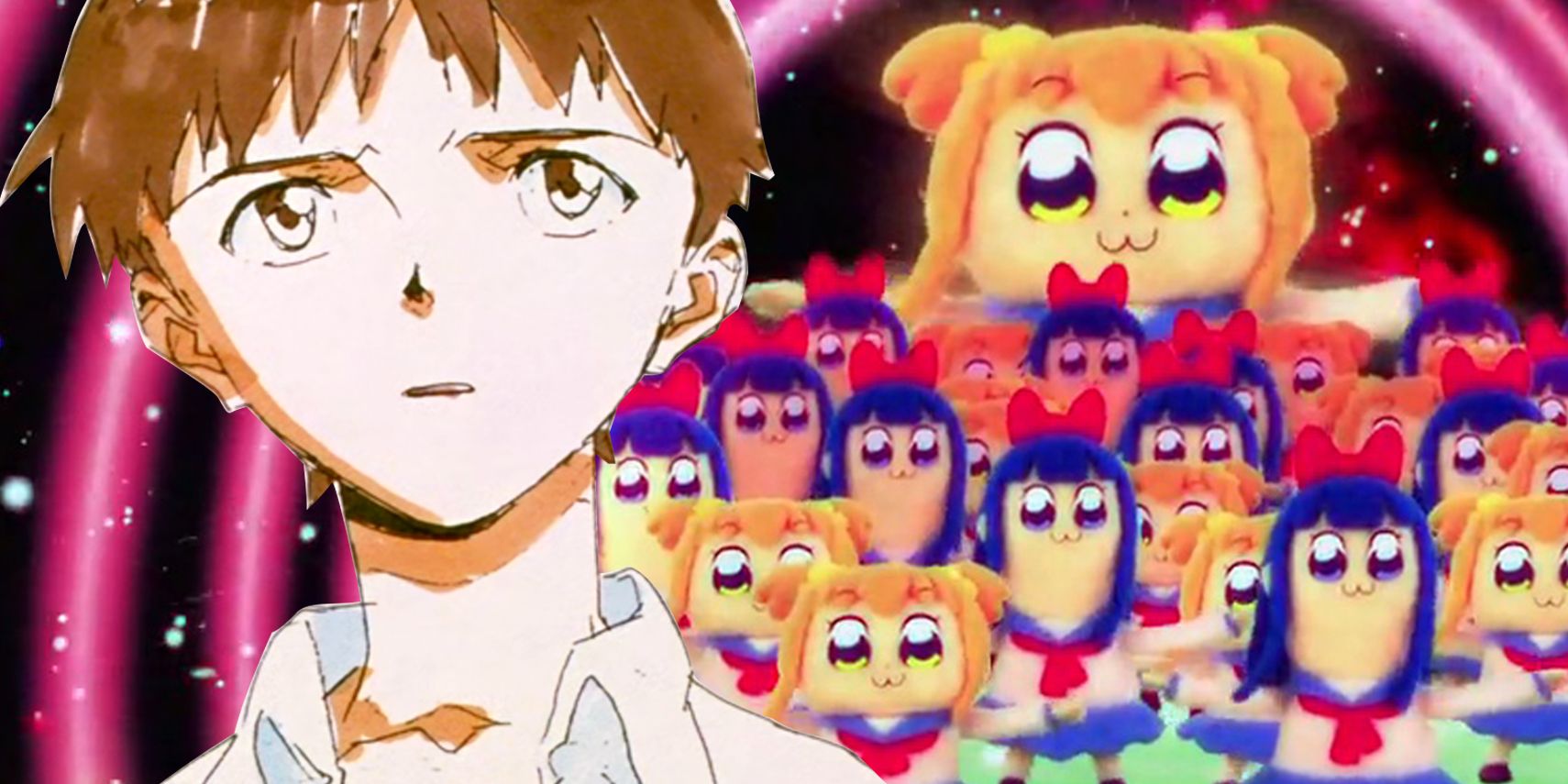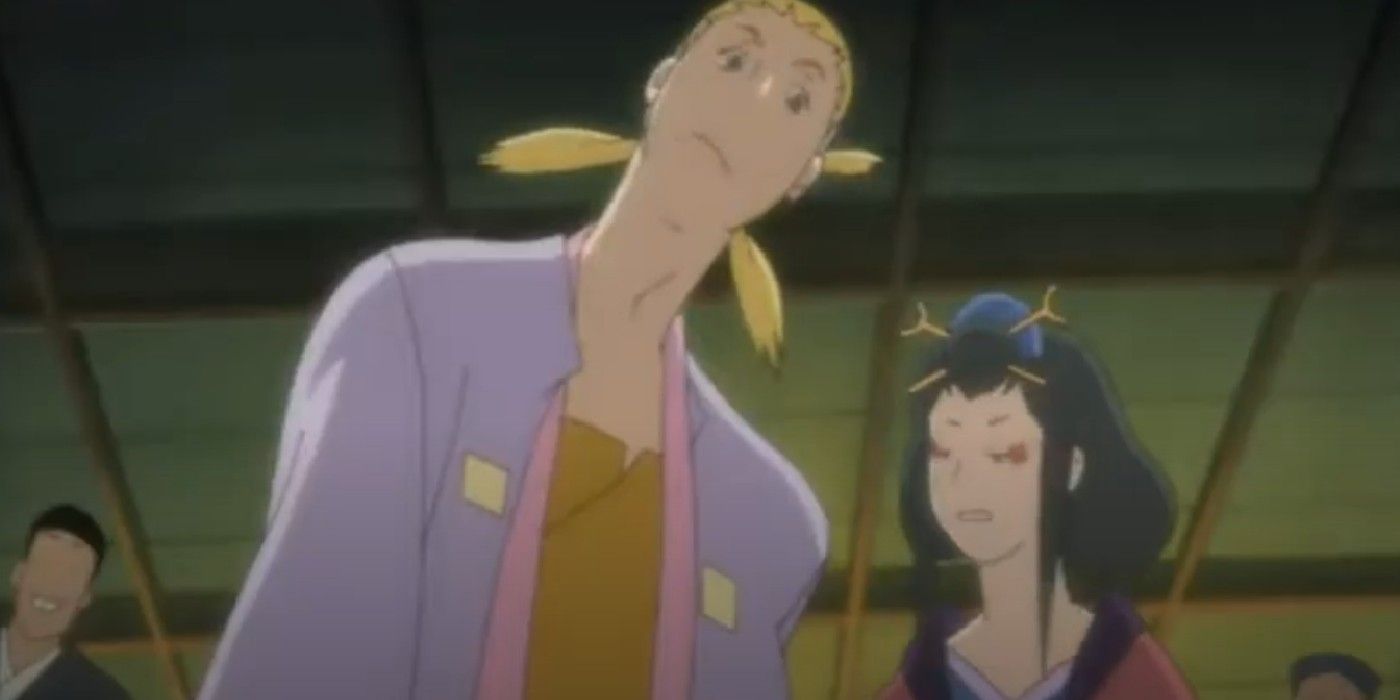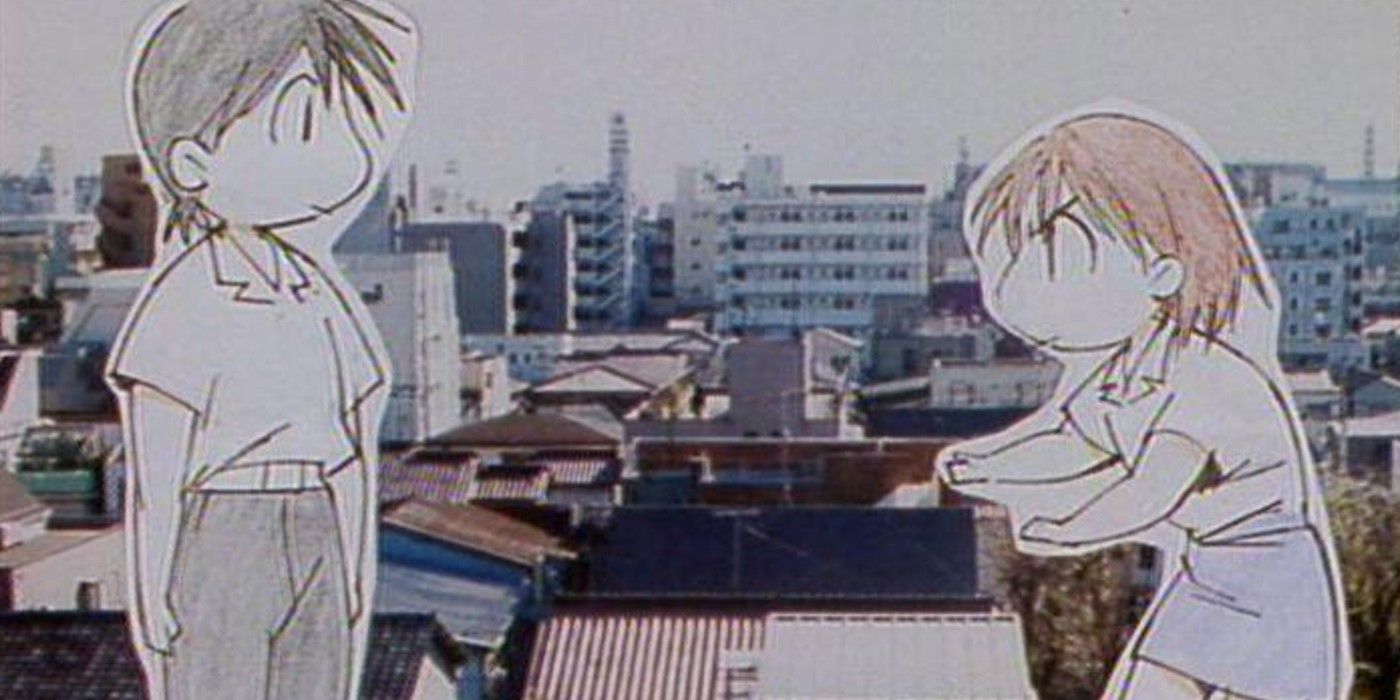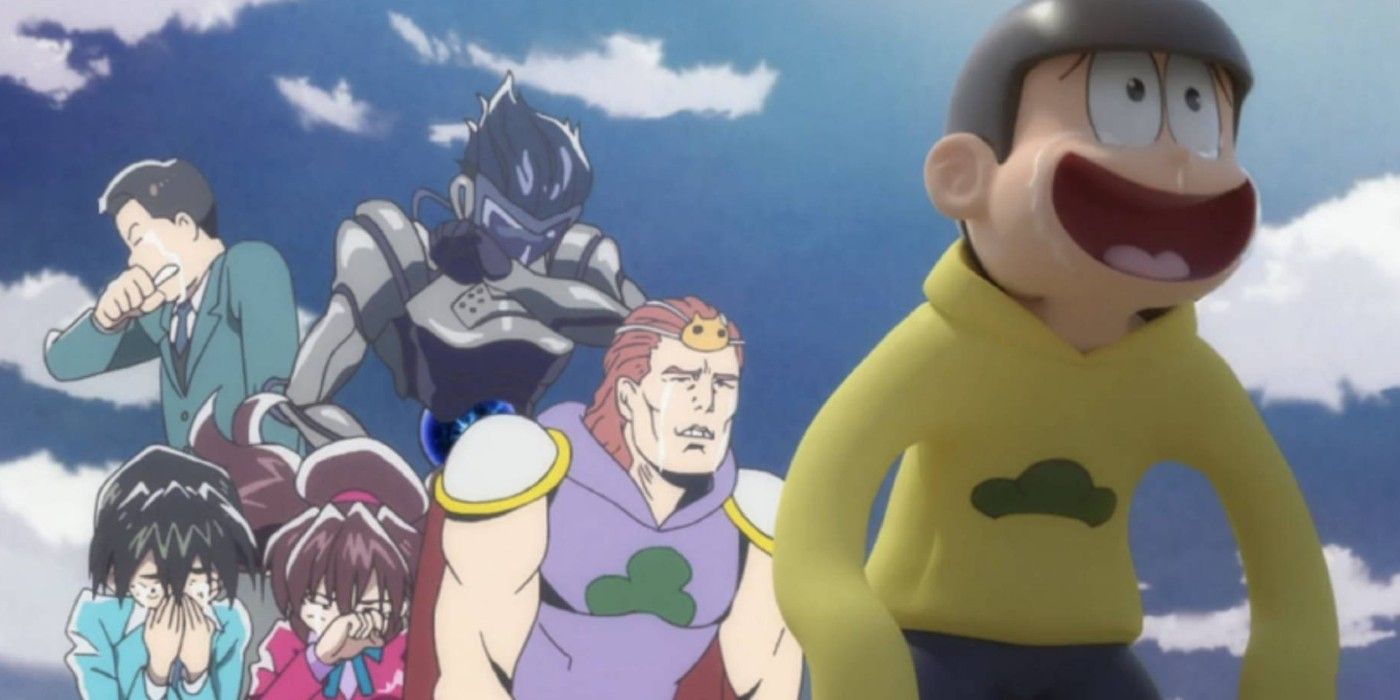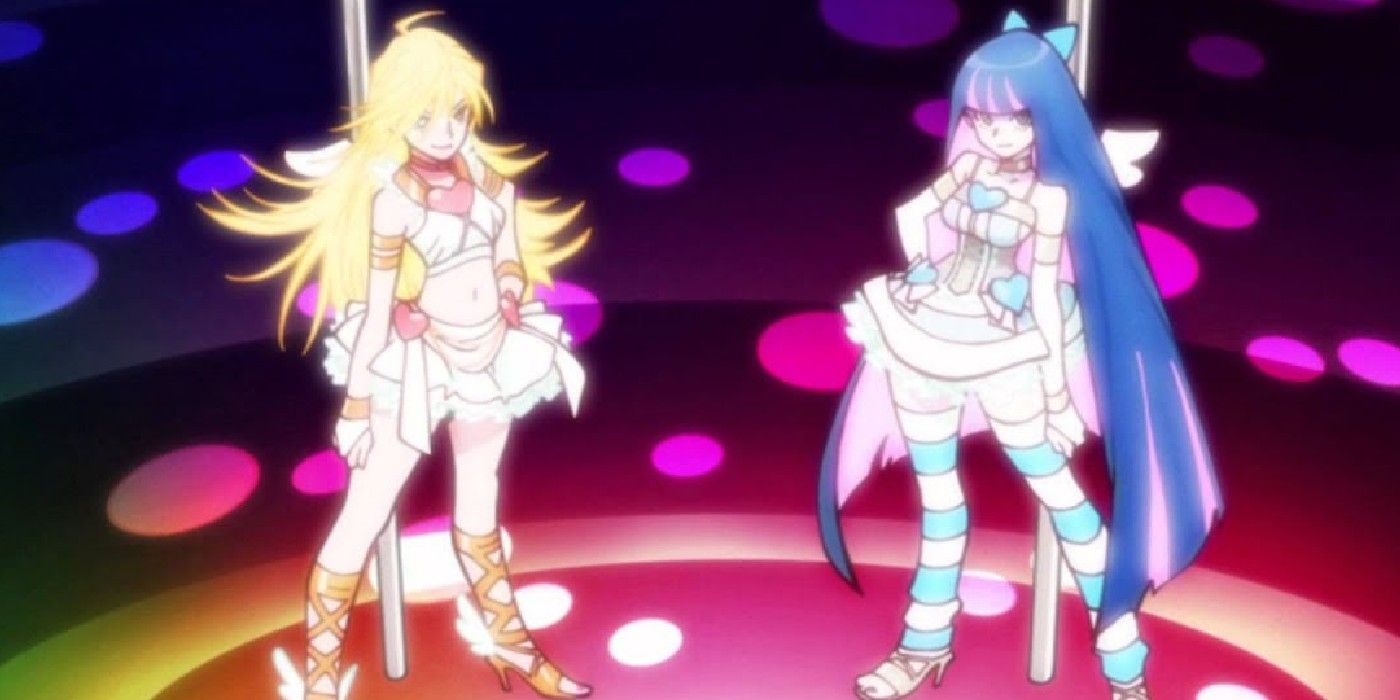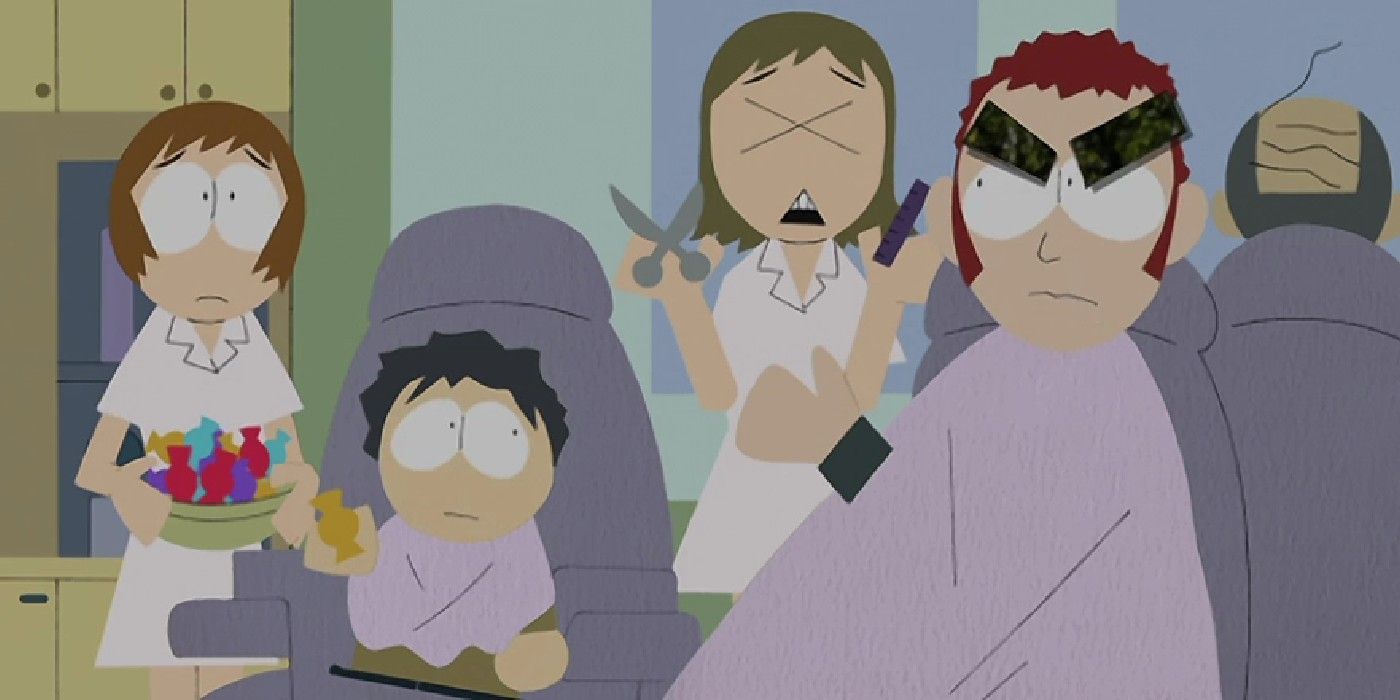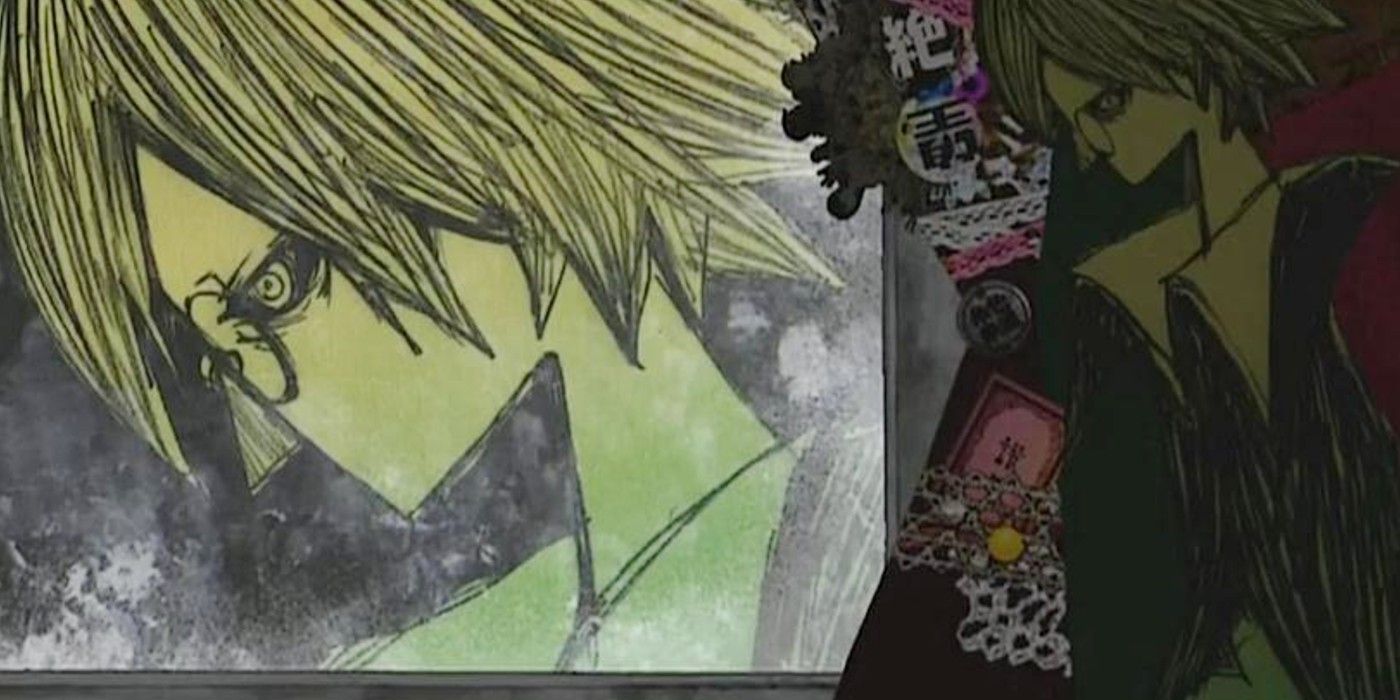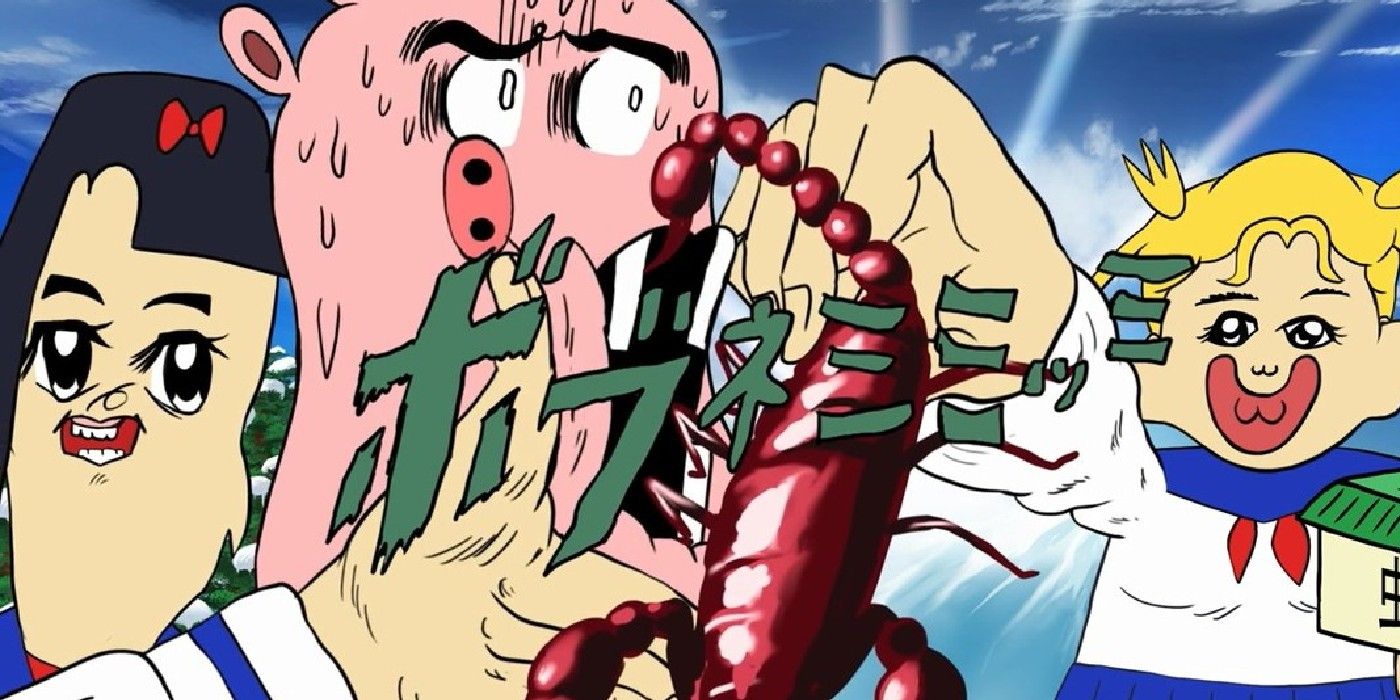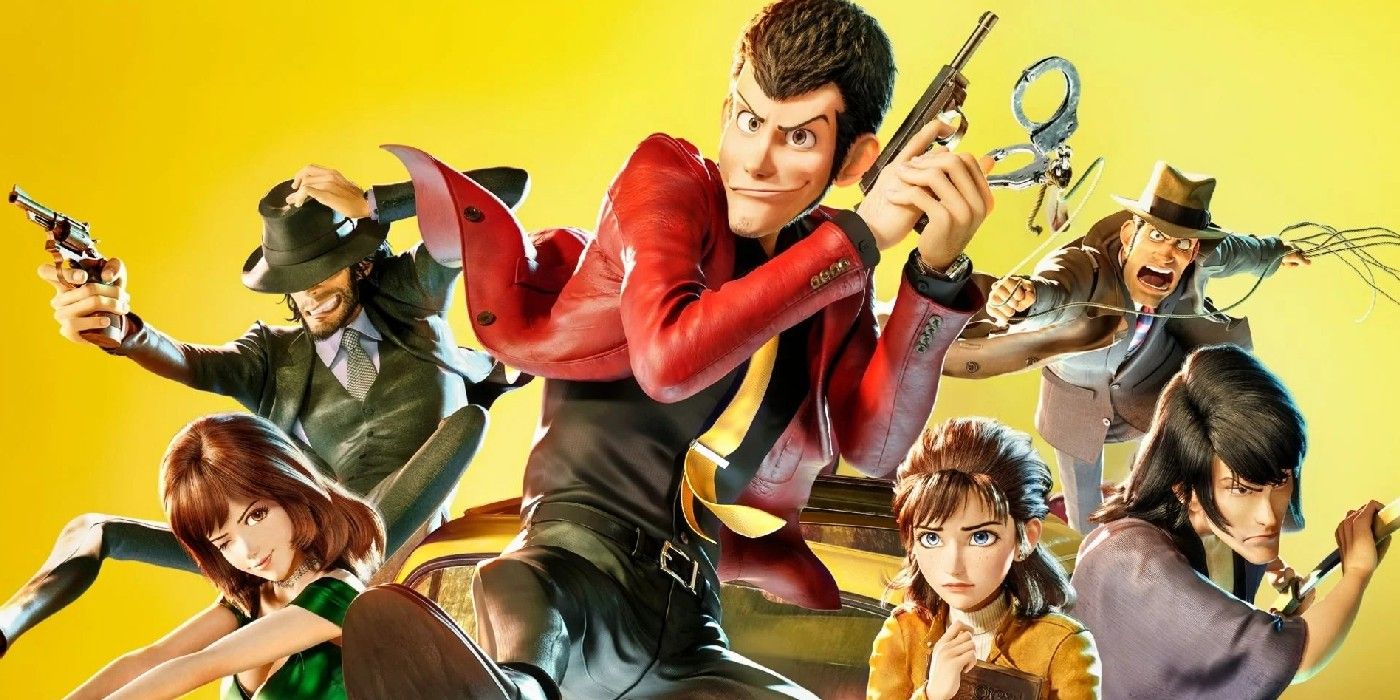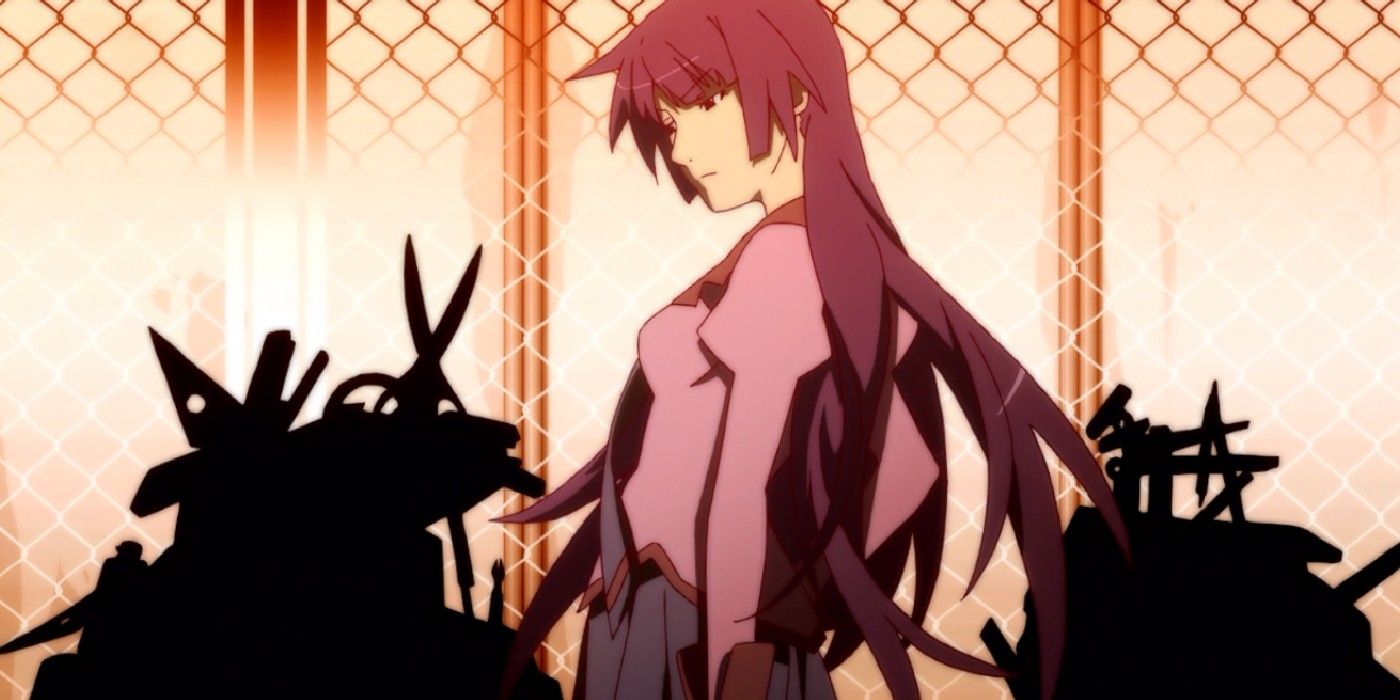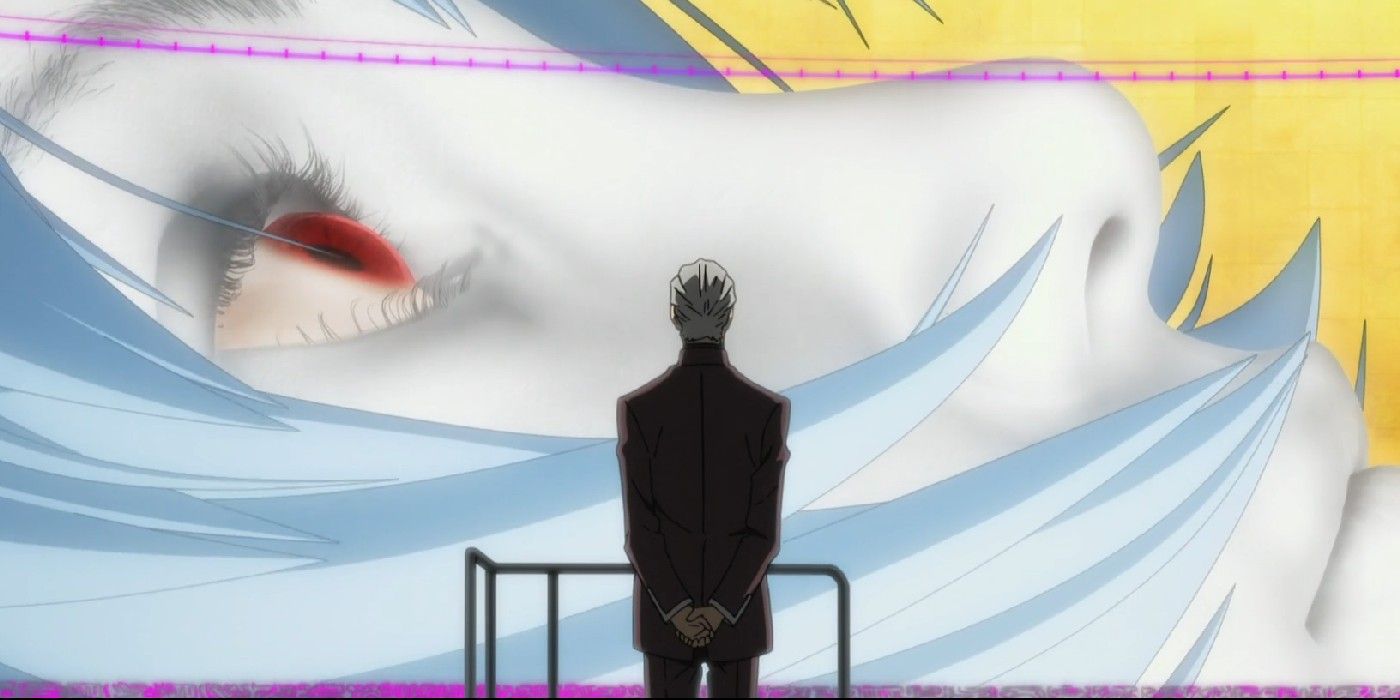Every now and then, an anime would suddenly break its own visual aesthetics and style, shocking viewers who grew accustomed to one specific look. At times, this was accidental, but in other cases, it's intentional on the creators' parts.
These sudden changes are always interesting to look out for. Not only can they give a familiar story a new perspective, but they can sometimes give audiences a rare glimpse into the often ignored behind-the-scenes of anime production.
WARNING: Spoilers ahead.
10 Samurai 7 May Or May Not Have Switched Styles In Episode 7 As A Narrative Device
In Samurai 7's seventh episode, Kanbei and his party track down his old wartime comrade Shichiroji at the Firefly Inn. In this episode, the art style took a noticeable dip in terms of detailing but was more fluid than usual. To this day, some viewers think this was due to a sudden budgetary issue, but it may have been a deliberate artistic choice.
A popular interpretation says that this shift was the anime's way of emphasizing the vastly different worlds of Shichiroji the samurai and Shichiroji the entertainer, visualizing his hesitation to leave a peaceful life for duty's sake. Notably, he and the rest of the anime reverted to the usual Samurai 7 style after he joined Kanbei's group.
9 His & Her Circumstances Ran Out Of Money Halfway Through Production
For the most part, His & Her Circumstances look was nothing spectacular; it looked like any lighthearted and soft romantic anime of the time. But halfway through Yukino Miyazawa and Soichiro Arima's love story, the anime suddenly shifted from traditional animation to mediums like finger puppets, cutout drawings, and manga scans with voiceovers.
This wasn't a creative choice but a necessary one born from troubled production. Showrunner Hideaki Anno quit near the anime's end due to intense creative differences with mangaka Masami Tsuda, and Gainax ran into budgetary issues yet again. Unlike Neon Genesis Evangelion which faced similar problems, these art shifts didn't age well.
8 Osomatsu-San Changed Styles Depending On The Joke
Generally, Osomatsu-San's art was consistent with its Showa Era look. But depending on whatever they were parodying, the way the Matsuno sextuplets were shown would change drastically. Cases in point, their perfect idol selves that look like the most boilerplate bishonen guys ever drawn, and the depressed Sanematsu's brooding seninen appearance.
The most radical art shifts usually occurred in the season premieres, which is where Osomatsu-San tends to get incredibly meta. For example, the second season opened with the Matsuno brothers taking a break to grow up a bit, so of course, this resulted in each brother looking like they came out of a different anime when they reunited after the timeskip.
7 Panty & Stocking With Garterbelt Used Different Art Styles For Comedic Effect
Panty & Stocking With Garterbelt is essentially anime's response to raunchy American adult cartoons, which is why its general art style resembles something from Cartoon Network. But every so often, the art would switch styles. The most obvious one occurred during Panty and Stocking's transformation scenes, where they're given a fanservice-heavy anime look.
There are simply too many art shifts in the anime to list here, and they usually happened as a comedic homage. For example, Panty and Stocking's intense sibling rivalry led to them taking on the forms of the Autobots and Decepticons from the original Transformers cartoon, and Garterbelt's many deaths were shown with an exploding papier-mâché figure.
6 FLCL Visualized Its Tonal Shifts With Changing Art Styles
FLCL can be read as the anime adaptation of the intense highs and lows of adolescence. The anime reflects this by shifting art styles during big emotional moments, whether they're comedic or dramatic. An example of the former had Commander Amarao turning into a South Park character when he belayed orders at a hapless barber.
As for the latter, darker and more brooding visuals were used to convey more serious emotions like self-loathing or lashing out. A good instance of this occurred in FLCL: Progressive Episode 5, where Hidomi's angst hit a deadly peak. Here, the animation changed from traditionally hand-drawn scenes to chalk drawings, paintings, and manga panels.
5 Sayonara, Zetsubo-Sensei Used Different Styles To Depict Nozomu Itoshiki's Mood Swings
Sayonara, Zetsubo-Sensei chronicles the life of Nozomu, a clinically depressed teacher whose students and friends relentlessly try to snap him out of his despair with increasingly eccentric antics and hijinks. Depending on the episode's plot, the art would either shift into another style to either reflect the situation's craziness or Nozomu's angst.
In one episode, the anime was remade into a kid-friendly magical girl show where Nozomu was the campy masked villain who was empowered by his and others' hopelessness. A darker art shift depicted Nozomu's bleak outlook and worldview by adopting the look of the Witches' labyrinths from Puella Magi Madoka Magica.
4 Pop Team Epic Switched Animation Style Or Medium In Every Sketch
Besides having famous anime voice actors and actresses take turns to voice the main characters in each episode, another part of Pop Team Epic's zany appeal was its constantly changing art style. Each episode crammed as many shorts as they could into 10 minutes (which was then replayed, but with a different dub), and every short was animated by a different studio.
The most common look was an accurate recreation of the manga, but after just one sketch, Pop Team Epic would switch to the likes of the deliberately ugly Bob Team Epic or change mediums to that of pixel art or stop-motion felt dolls. One of its most extreme art shifts was during its fake shojo show segments, Hoshiiro Girldrop, which was the anime's episodic stinger.
3 The Lupin III Franchise Changed Art Styles In Each New Incarnation
Lupin III has been on the air since the '70s and, even if it maintained its signature character designs, it had to adapt to the anime industry's ever-evolving stylistic preferences and trends. Every time Lupin and company resurfaced in a new decade, they enjoyed an artistic upgrade, even though they retained their classic looks and fashion.
Most recently, Lupin got the digital treatment in his first 3D movie, Lupin III: The First. Before that, Lupin got a grittier and sharper makeover in the series Lupin III: The Woman Called Fujiko Mine and its adjacent movies. That said, Lupin's appearance and animation in The Castle Of Cagliostro remain his definitive look for most old-school fans.
2 The Monogatari Series Blended Different Mediums To Get Into Its Characters' Minds
The Monogatari series has been widely considered to be Shaft's animated magnum opus, and with good reason. On the surface, Monogatari basically placed Araragi, Senjougahara, and friends in what may pass for photos of actual cityscapes. But when their interactions get heavy and serious, the art morphs to match the needed tone.
Intense discussions are depicted through rapidly edited flashing words and uncannily surreal visuals, while grueling fights seem to take place in their own pocket dimensions filled with negative space and symbolic surroundings. None of this is meant to be taken literally, and it's one of the most unique forms of visual storytelling ever seen in anime.
1 All Of Evangelion Used Changing Art Styles To Convey Shinji Ikari's Mental State
Due to Gainax's financial woes, Neon Genesis Evangelion ended with a two-part clip show comprised of archived footage, colored and monochrome pencil tests, flashing text, and introspective voiceovers. What was once a workaround evolved into the best representation of Shinji's broken self, and the movies took this to the extreme.
The End Of Evangelion and Evangelion 3.0 blended live-action imagery with traditional animation during their climaxes to reflect Shinji's crumbling mind. Meanwhile, Evangelion 3.0 + 1.0 combined different animation techniques (such as hand-drawn and CG) with live-action to show the surreal mental battle that Shinji had to win to achieve true self-actualization.

